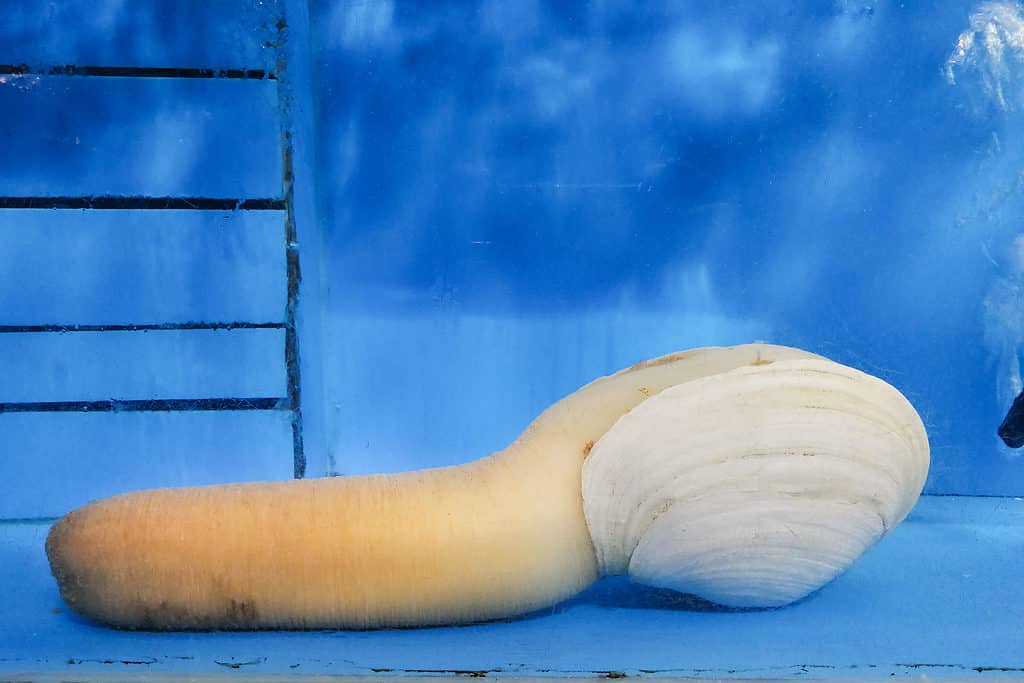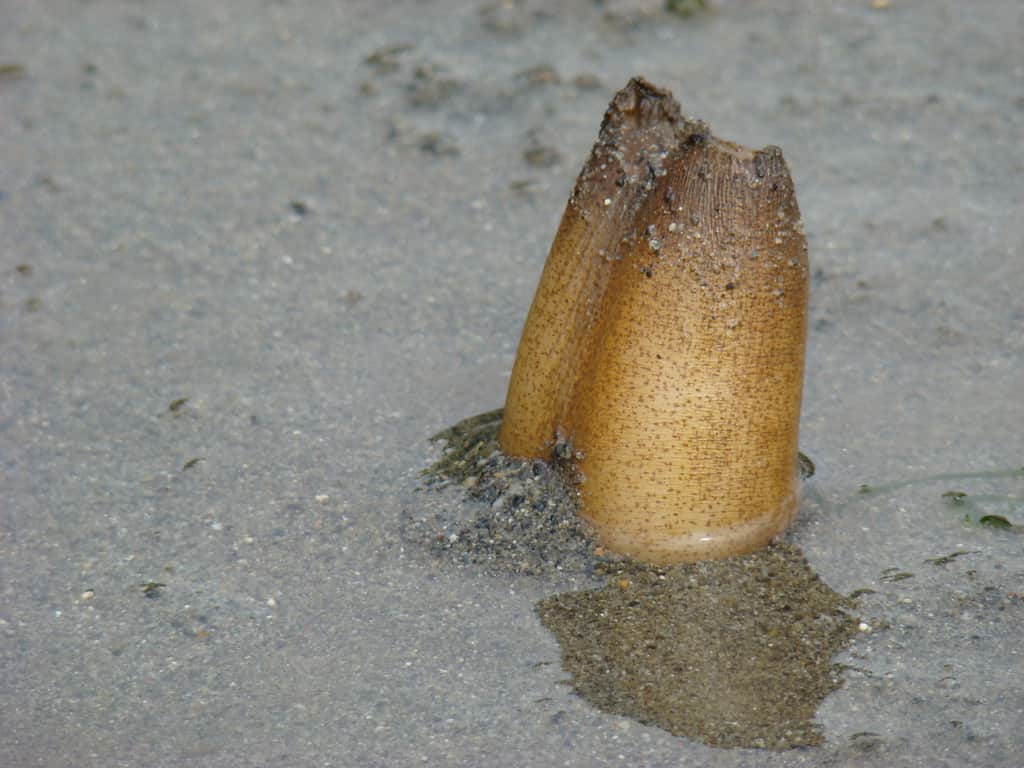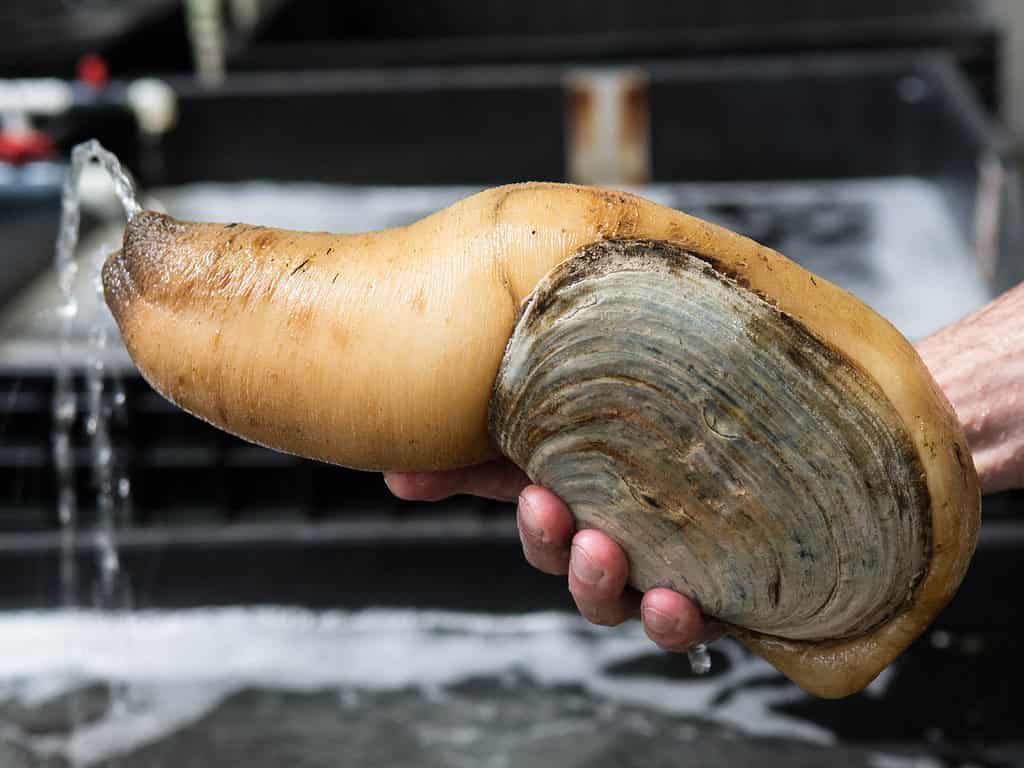Discover The World's Largest Geoduck - AZ Animals
More Great Content:
↓ Continue Reading To See This Amazing Video
Geoducks (pronounced "gooey-duck") are some of the strangest looking, tastiest bivalves on the planet. That is, if you enjoy eating odd treats from the sea. Or, more accurately, from the sand. But, just what is a geoduck, and, how big is the world's largest geoduck? Here, we'll discover the answers to those questions and more, as we explore all there is to know about the Pacific Northwest delicacy known as the geoduck. By the end of this article, you'll be an expert (almost) not only on the biggest geoducks in the world, but on how to harvest, prepare, and eat these unique bivalves.

©iStock.com/ThamKC
Just What is a Geoduck?
Known scientifically as Panopea generosa, the geoduck is a member of the Bivalvia class of animals. More specifically, they belong to the Hiatellidae family, which includes other bivalve mollusks, like saltwater clams. But, looking at a geoduck — they're also known as king clams, goiducks, goeducks, elephant clams, and gweducks — you might not recognize it as a type of clam. In fact, despite (and because of) their strange appearance, geoducks are actually the largest digging clams on Earth.
Geoducks are best described by their two main features; a long, relatively narrow shell, and an even longer "neck." This neck (which resembles many things, particularly an elephant's trunk) gives them their ability to "dig." It also allows them to eat, breath, and expel water. Geoducks live only in the salty waters of the West Coast. They can be found as far south as Baja, and as far north as Alaska. They're most commonly harvested and eaten in Washington and Oregon.

©Jeff, CC BY 2.0
The World's Largest Geoduck
Before we discuss the world's largest geoduck, it's important to make a couple of distinctions. First, we'll talk about the largest wild geoduck. That is, the largest geoduck ever harvested in the wild, and verified by the Washington Department of Fish and Wildlife. Then, we'll take a look at reports of the largest ever commercially farmed geoducks, which can reach truly monstrous proportions in comparison to their wild counterparts.
The world's largest geoduck (harvested in the wild) weighed 8.16 pounds, and took two hands to hold. The Washington Department of Fish and Wildlife verified this giant geoduck in 2000, when biologists harvested it at Adelma Beach in Discovery Bay. The average size for a geoduck is around two pounds (shell and body included). Geoducks generally reach this size by 3-5 years of age, and generally stop increasing in size at around 15 years of age. However, they can live for many, many years beyond their growth stage.
Though there are no official records of the largest ever commercially farmed geoducks, farm raised mollusks have the potential to grow to gigantic proportions. Farm raised geoducks can reach up to ten pounds, or more, in weight. But, they rarely get this big. This is because the best time to harvest a geoduck is when it's about two pounds—the perfect size and tenderness for eating.

©Gunnhilduur, CC BY-SA 4.0
Why Do Geoducks Live so Long?
Remember when we said that geoducks live a long time? Well, we weren't kidding. The oldest ever geoduck on record lived to be 168 years old! And that's not even extraordinary for a geoduck, whose average lifespan seems to be at least 140 years. That being said, the world's largest geoduck likely wasn't anywhere near that age when it was harvested.
Can You Eat Geoducks?
The biggest question of all: are geoducks good to eat? The answer depends on who you ask. But, if you're into seafood (or mollusks in general) the answer is likely a resounding yes. There's a reason geoducks are such a popular target for recreational "fishermen", as well as a cash crop for aquaculture.
But, just how does one eat such a strange looking mollusk? In the Pacific Northwest, the most popular recipe for geoduck is clam chowder. If you're lucky enough to try clam chowder with freshly harvested geoducks (preferably those you harvested yourself), you'll probably never forget the experience.
How Do You Harvest Geoducks?
Whether you're harvesting a normal sized geoduck, or the world's largest geoduck, the process is much the same. Geoduck harvest seasons occur at various times of the year, and rely largely on low tides. Because geoducks live 2-4 feet deep in beach sands, harvesters have to wait for a tide low enough for digging. This might mean a moonlight clam dig. But, no matter what time the tide goes out, you can be pretty sure that you won't be alone.
Digging for geoducks starts with wandering the wet sand, looking for tiny air bubbles. Once you find a suitable spot, you use a special geoduck digging tube (an often homemade contraption that cannot be mistaken for anything else) and get to work. If you're lucky, at the bottom of your hole, you'll find a delicious geoduck, trying desperately to dig deeper into the sand. The best part? Now you get to reach into the hole (often submerging your arm up to the shoulder) and fish the thing out.
Now all you've got to do is get a few more, clean them, and enjoy!
Comments
Post a Comment